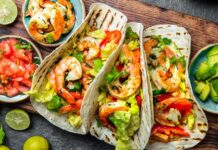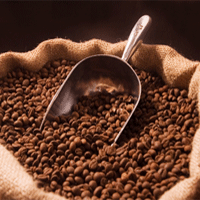A cup of old-fashioned black java used to be enough to drive customer engagement at coffee chains across the country, but now the customer wants it all — from better flavour options to better pricing and sustainable product. Keep reading to find out exactly what’s winning their favour.
Sweet, salty and savoury
Decadently sweet beverages, balanced by savoury snacks and breakfast sandwiches, have dominated menu development at Canada’s leading coffee purveyors in the past 18 months.
For coffee and espresso drinks, caramel-flavoured drinks in particular are on trend. For example, last May, Tim Hortons rolled out the Caramel Chocolate Brownie Iced Capp Supreme as a limited-time offering (LTO); it was topped with a chocolate-flavoured whipped topping and brownie crumbles. In September, McDonald’s began offering caramel as an addition to its McCafé beverages and introduced a caramel hot chocolate and caramel mocha.
And, Starbucks and 7-Eleven also got in on the salted-caramel flavour trend. Starbucks introduced a salted caramel mocha LTO last fall, and 7-Eleven debuted a Skinny Salted Caramel Mocha, made with sucralose, in March. More recently, Starbucks added the Caramel Ribbon Crunch Frappuccino and the coffee-free Caramel Ribbon Crunch Crème to its frozen-beverage lineup for the summer. The drinks feature caramel syrup within the beverage’s base and a layer of dark caramel sauce, a caramel drizzle and a crunchy caramel sugar topping.
Meanwhile, other new coffee-based beverages from Canada’s biggest chains also satisfy a sweet tooth and a caffeine craving. McDonald’s introduced two seasonal LTO McCafé mochas in the past year — peppermint in November and raspberry in January. At Starbucks, after a successful run last summer, the Mocha Cookie Crumble Frappuccino returned to stores in May. Finally, Burger King made its entrance into the frozen-coffee-beverage market at the end of 2012, announcing the debut of Frappes in two varieties, mocha and caramel.
But, not all operators are selling indulgent coffee variations — a few are focusing on espresso as a power shot and slightly more health-conscious beverages. For example, Jugo Juice blends real banana and low-fat frozen yogurt with mocha iced coffee for its Banana Buzz Smoothie.
Meanwhile, operators have introduced an assortment of portable savoury breakfast and snack selections to pair with these sweet coffee treats. This spring, Tim Hortons added a Flatbread Breakfast Panini, served on a whole-grain flatbread with a choice of seasoned egg or egg white, cheese, and sausage, hickory-smoked ham or hickory-smoked thick-cut bacon.
And, Timmy’s and McDonald’s introduced new bagel sandwiches last year — the former, a cheddar cheese bagel and the latter featuring steak, sautéed onions, cheese, a folded egg and HP sauce on a multigrain bagel. Starbucks added Bavarian-style pretzels in asiago cheddar and Stoneground Dijon varieties to its food lineup in May.
Bundles of breakfast joy
Promotional pricing of coffee-and-breakfast bundles continue to encourage regular coffee customers to buy food or sample new coffee beverages. At Tim Hortons, a limited-time promotion offered guests a doughnut for 49 cents with the purchase of any coffee or hot beverage. And, McDonald’s rolled out a limited-time-offer combo of a small Premium Roast Coffee and a muffin for $1.39; customers were given Fruit & Maple Oatmeal for free with the purchase of any McCafé specialty coffee. Just a few weeks later, for one week, Starbucks offered any breakfast sandwich for $2 with the purchase of any drink.
Even Subway, which has moved aggressively into the breakfast market, introduced a limited-time breakfast special this spring, featuring a six-inch Egg and Cheese flatbread and a 12-ounce coffee for $3.
Health, wellness and welfare
As ingredient sourcing and sustainable agriculture continue to gain attention from consumers, healthful beverages are also on the rise. As revealed in Technomic’s “2012 Canadian Healthy Eating Consumer Trend Report,” consumers believe that foods and beverages described as “natural” (69 per cent in agreement), “organic” (66 per cent), “local” (46 per cent), “sustainable” (30 per cent) or “fair trade” (18 per cent) are at least slightly more healthful than those that are not. For example, a coffee purveyor’s cream or whole milk wouldn’t traditionally be associated with a healthful menu positioning, but today’s educated consumers may be interested to know whether the milk comes from locally raised grass-fed cows.
Sustainability is a hot-button issue for coffee purveyors, too. In fact, 24 per cent of coffee and bakery café users surveyed for Technomic’s “Bakery and Coffee Café” report said they would be more likely to purchase — and willing to pay more for — items labelled sustainable.
So, Tim Hortons is right on trend. In May, the chain introduced the first coffee to be sourced solely through the Tim Hortons Coffee Partnership, an eight-year-old initiative that aims to support coffee farmers in Latin America. The Tim Hortons Partnership Blend is now available at participating Tim Hortons’ restaurants for $7.69 per 343-gram bag; and $1 from every purchase will revert to the partnership.
For its part, in March, McDonald’s USA and McDonald’s Canada announced plans to invest more than $6.5 million over four-and-a-half years in a program to help 13,000 Central American farmers produce coffee more sustainably. The program, which McDonald’s has supported since 2011, provides Guatemalan farmers with technical assistance on sustainable agriculture practices.
It’s clear that as today’s consumer becomes increasingly demanding, coffee will evolve further; those who keep on trend with innovation and sustainable practices will be most primed for success.



















